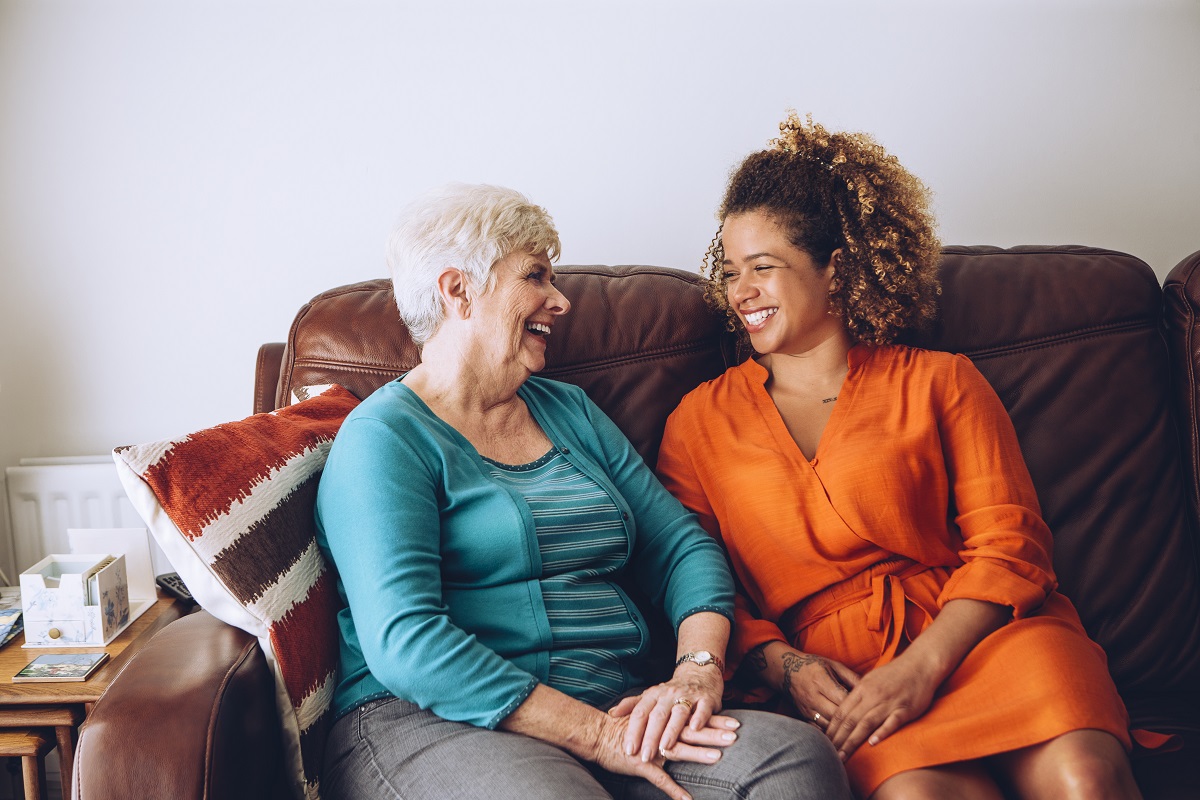Top tips for making doors safe in a dementia-friendly home
Find out how you can improve door security and prevent accidents if you’re caring for someone with dementia
Being able to get in and out of their own home, or simply move between rooms easily will increase your loved one’s sense of independence. But getting the balance right between keeping someone with dementia safe and secure, while still allowing them as much freedom as possible, can be tricky. However, making a few changes to the doors in the home can make a big difference to their quality of life, and your peace of mind.
Four questions to ask yourself about doors
1. Is it accessible?
2. Is it secure?
3. Is it easy to see?
4. Is it well lit?
1. Making it accessible
Imagine wanting to make a cup of tea but not being able to find the door to the kitchen. This is the sort of problem someone with dementia deals with every day, so make their life a bit easier by ensuring the doors they need regular access to are easy to see and easy to walk through.
– Is it wide enough? This is crucial, especially if they need to be able to get through using a walking frame or wheelchair.
– Does the front door need a ramp? Ramps might be particularly important if they require a big step up, and should be clearly marked to reduce the risk of tripping.
– Would a grab rail help? A grab rail fitted at the door entrance could be a great help by providing something to hold onto while stepping up.
2. Making it secure
Letting people in
Regular visitors can really brighten someone’s day. So whether it’s family, carers, or grocery deliveries, it’s important that someone with dementia feels when they answer the door and can welcome visitors inside with relative ease.
-Installing an intercom system can be useful as it lets them check who’s at the door before letting anyone in. Video intercoms are best so the caller can be identified properly.
-You could consider setting up a key safe. This is a small box attached to the wall outside the front door which is opened up by entering a code. Inside the box is a front door key so friends, family or carers can let themselves in. Only the people who should be coming into the house would know the code.
Going out
It’s a sad fact that dementia will make your loved one increasingly vulnerable, and your urge to protect them will, understandably, grow stronger But personal freedom is important to everyone –nobody wants to be a prisoner in their own home. Deciding how often they go out and whether they’re safe to go out alone, is something you need to think about and discuss regularly with everyone in your support network, as well as the person with dementia.
But whilst discussions are on-going it’s worth considering:
– Setting up an electronic reminder by the front door so that anyone leaving the house remembers to pick up front door keys, to check windows are closed, or to not let in any strangers.
– If wandering is becoming an issue, you can fix a magnetic door alarm to doors (both room doors and main entrance doors) which will trigger an alarm once the door is opened.
3. Making sure the door is easy to see
Dementia affects eyesight, in particular the ability to see different colours easily. So if a door is painted the same colour as a wall, your loved one might struggle to see it. Once you know this, it can be used to protect them.
– If it’s a door you want them to go through regularly, consider painting it a contrasting colour to the wall. If that’s too much, think about painting the door jam. So if the wall is cream or white, pick out the door or door jam in red or blue.
– However, if it’s a door you’d prefer them to avoid opening (for example, a door to a cellar or a medicine cupboard) making it a colour that blends into the wall can make it less likely that they’ll see it or open it.
TIP– Watch out for door mats both inside and outside. If they’re dark, someone with dementia-related visual problems may mistake the mat for a large hole and either refuse to step onto it, or try and step round or over it, which could lead to trips and falls.
4. Making sure the door is well lit
This might sound obvious but it’s surprising how often hallways in particular are badly lit. Since people with dementia can struggle to see in low light, and can become worried and agitated if an area is particularly dark or shadowy, it’s very important to:
– Ensure that light switches are clear and easily accessible in areas near doors so people can see them as they enter a room or building.
– Consider automatic lighting that’s triggered by movement. This is particularly useful for external entrance lights so they come on as someone approaches the front door. It also means you don’t need to worry if you’ve forgotten to turn the light off as they’ll switch off automatically.
– Illuminate important areas of the door such as the keyhole or doorbell, making it much easier to find them. This can be done with lighting or by making them a different colour to the door so they stand out.
SHARE
Explore more




